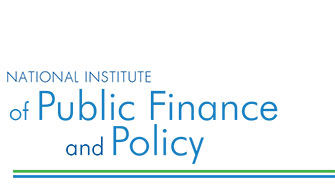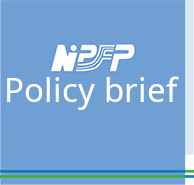Have investment sentiments in India revived in FY 26?
Rudrani Bhattacharya, Associate Professor, National Institute of Public Finance and Policy, New Delhi, India}. email: rudrani.bhattacharya@nipfp.org.in
Dinesh Kumar Nayak, Economist, National Institute of Public Finance and Policy, New Delhi, India}. email: dinesh.nayak@nipfp.org.in
Monisha Binoy, Research Fellow, National Institute of Public Finance and Policy}. email: monisha.binoy@nipfp.org.in
|
Abstract: The Indian economy experienced growth moderation in the first half of 2024-25, after recording a strong and robust rate of 8.8% growth in the past three years. High growth rate in investments was the main driver behind this growth spark. Government’s thrust on boosting capex facilitated private investment to crowd in, by reducing Covid-time policy uncertainties. However private investors’ sentiments went into a downturn since 2022-23, followed by a slowdown in public investments from the beginning of 2024-25 due to uncertainties related to the upcoming election and fiscal consolidation measures of the government. Consequently economic growth declined to 6.5% in 2024-25. The present study analyses the current investment trends for public and private sectors and the overall economy, using CMIE’s Capex database to explore investment growth outlook in FY 26. The analysis suggests strong revival of investments expected in India during 2025-26 via rise in public sector investment activities, while private investors’ sentiments will still remain muted in FY 26. Comparing the pace of economic activities across the quarters of FY 25, the economy recorded a moderate 6.1% growth rate in H1 FY 25, compared to 9.5% growth rate in the same period previous year. The growth rate improved to 6.9% in H2 FY 25, yet 2% below the growth rate achieved in H2 FY 24. While public and private demand growth remained volatile across the quarters of FY 25, interestingly, investments recorded an impressive growth of 9.4 per cent in the last quarter of FY 25, after maintaining a moderate rate of 6.2% in the previous three quarters.
|
Endnote(s)[1] The rise in investment growth was partly due to strong base effect from the covid year. [2] CMIE Capex database provides information on current investment projects in India that would create productive capacities in the future. The database captures information recorded by CMIE since 1995 on projects with capital expenditure of Rs.10 million or more. The database captures projects value at different phases of implementation, starting from announcement of new projects, during the implementation phase to the final culmination to new capacities. See https://www.cmie.com/kommon/bin/sr.php?kall=wprdesc&page=capex_desc for more details. [3] Since the official statistics on quarterly GFCF does not provide the break up for the investments in public and private sectors, we conduct the cross-correlation analysis between overall GFCF growth and the growth in value of projects completed, combined for the public and private sectors. |



